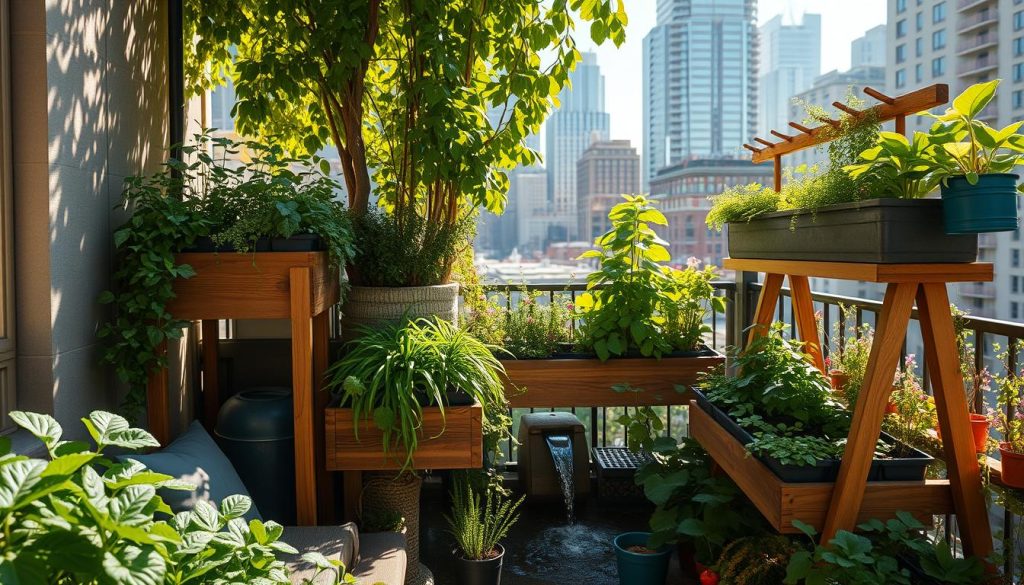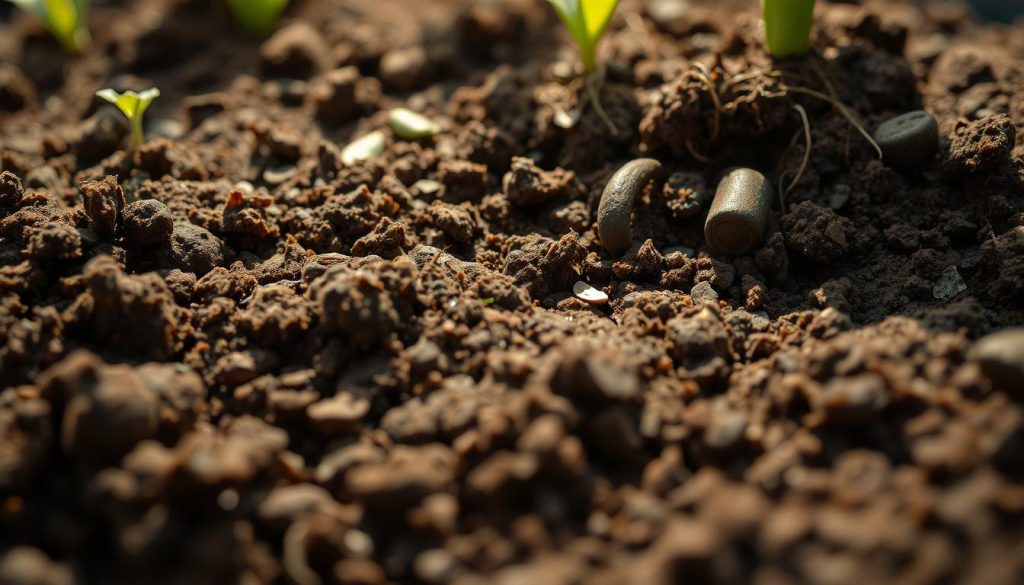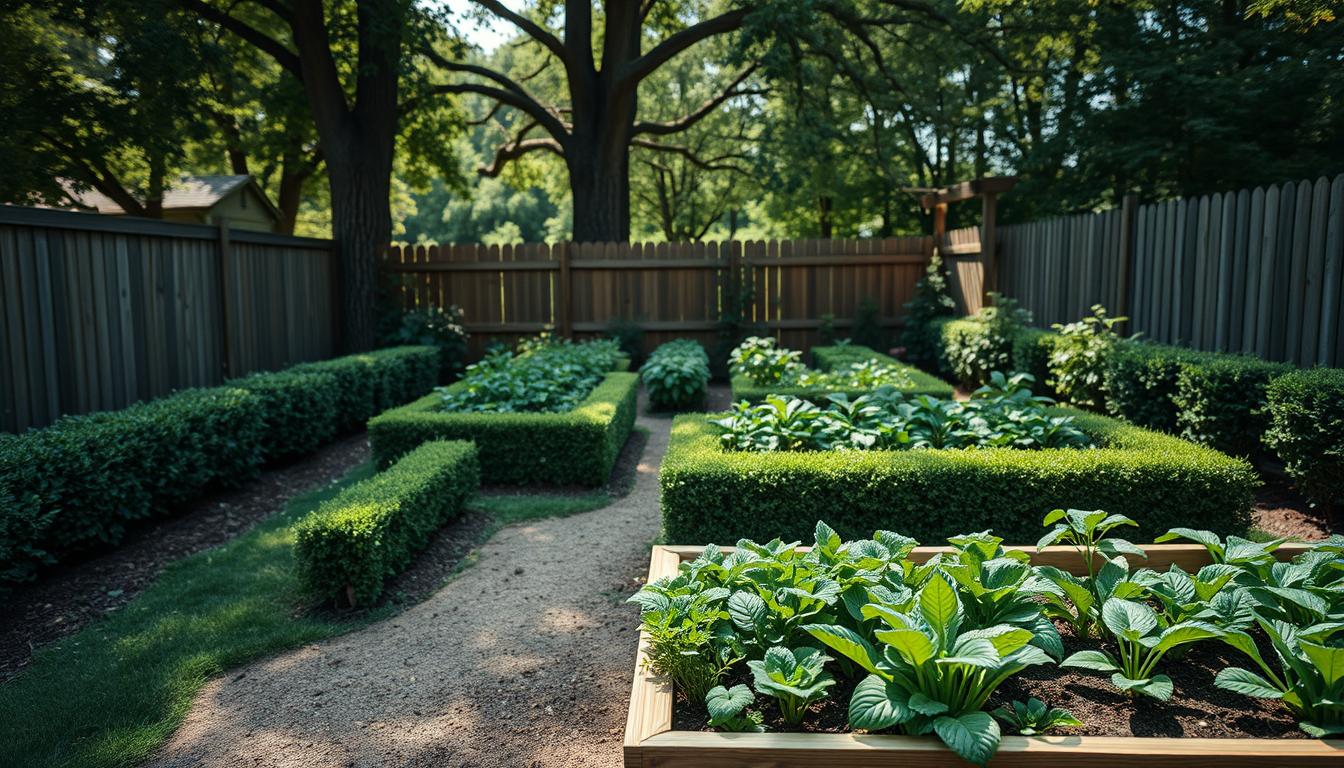Growing your own food and flowers becomes more exciting when you use raised beds. These elevated areas filled with top-notch soil are great for all gardeners. They’re loved by city folks, suburban residents, and country gardeners.
Garden beds are very versatile. You can make one yourself or buy a ready-made one. Either way, they turn simple spaces into lush gardens.
They’re perfect for those with tough soil, physical issues, or little space. You can control your soil quality and avoid back pain and weeds.
Whether you’re new to gardening or have lots of experience, raised beds can help. They solve many growing problems. Ready to see how they can change your gardening?
The Evolution of Home Growing: Why Elevated Planting Works
As cities grow and life speeds up, we’ve changed how we garden at home. Raised bed gardening is now key. It meets our need for fresh food and beauty in tight spaces. Today’s gardeners face new hurdles but still want to grow their own food and connect with nature.

Modern Challenges in Traditional Gardening
Old-school gardening has its downsides. City folks often lack yard space. Soil quality is also a problem, thanks to construction that harms the soil.
Busy lives make it hard to keep up with traditional gardens. They need a lot of work. Many can’t garden because of the physical demands.
Weather changes add to the gardening woes. Unpredictable weather makes it tough to grow plants the old way.
How Raised Beds Transform the Growing Experience
Raised beds change gardening for the better. They let you control the soil and drainage. This means better growing conditions from the start.
They also keep pests out and warm up faster in spring. Even small spaces can grow veggies. Raised beds make gardening easier and more productive.
They’re great for people with mobility issues. Raised beds make gardening accessible for longer.
Who Benefits Most from This Gardening Approach
City folks with little space love raised beds. They make the most of small areas. Families can grow organic food easily with raised beds.
People with disabilities find joy in gardening again. Raised beds are easier to manage. They help beginners avoid common gardening problems.
Even seasoned gardeners find benefits. Raised beds help grow more food and extend the growing season. They’re a flexible solution for any gardening challenge.
Key Benefits of Raised Bed Gardening for Home Growers
Raised beds offer many advantages over traditional gardens. They solve common problems and improve the growing process. Whether you’re new or experienced, knowing these benefits will help you enjoy your raised bed more.
Superior Soil Quality and Drainage Control
Raised beds let you control your soil perfectly. You can avoid soil issues like clay or sand. This way, you create the best soil for your plants.
By mixing topsoil, compost, and amendments, you make a perfect growing medium. Plants grow stronger and healthier. This leads to better growth above ground.

The design helps with drainage, preventing waterlogged roots. Yet, it also holds moisture well. This balance is great for most plants. Raised beds work well with permaculture, using nature’s processes.
Extended Growing Seasons and Increased Yields
Raised beds warm up faster in spring and stay warm longer in fall. This extends your growing season by weeks. You can plant earlier and harvest later than others.
The controlled environment allows for intensive gardening. Plants are closer together, increasing yields. As plants grow, their leaves cover the soil, creating a mulch effect.
Gardeners often get four times more produce from raised beds than traditional gardens. This is great for urban gardeners with limited space. They can grow more food in less space.
Weed Reduction and Easier Maintenance
Raised beds make weeding easier in several ways. The soil has fewer weed seeds. Plants are closer together, leaving little room for weeds.
The defined borders keep lawn grasses out. Raised beds also make maintenance easier on your body. This is a big plus for gardeners of all ages.
Protection from Soil-Borne Diseases and Pests
Raised beds protect against many garden problems. The soil is fresh and free of pathogens. The height deters pests like rabbits and insects.
This protection fits well with organic gardening. It makes it easier to use natural pest control methods. Raised beds help create a balanced ecosystem, a key part of permaculture gardening.
Planning and Designing Your Ideal Raised Beds
Starting your raised bed garden is all about picking the right spot. Look for a place that gets 6-8 hours of sunlight a day. It should also be easy to get to and have water nearby. Your garden should make your life easier, not harder!
Think about how you’ll reach into your beds. Most people find beds 3-4 feet wide are perfect. This width lets you get to the middle without stepping on the soil. Raised beds are great for small spaces because they can fit anywhere.
The height of your beds is important too. For lettuce and herbs, a shallow 6-inch bed works well. But for root veggies, you’ll need a deeper bed, 12-18 inches. If you have trouble bending, go for a taller bed, 18-24 inches.
What you choose for your bed’s material matters a lot. Untreated cedar is beautiful and lasts 10-15 years. Composite lumber is pricier but won’t rot. Galvanized metal is durable and adds an industrial look. If you’re on a budget, try using concrete blocks or old materials.
Use vertical elements to make the most of small spaces. Trellises and cages let plants grow up, not out. This is great for vining plants. Tiered systems are perfect for slopes, and modular designs let you add more beds later.
Use companion planting to make your garden more productive. Pair tall plants like tomatoes with low-growing herbs like basil. This uses space well and helps plants grow better together.
Begin with a small bed but think big. One well-designed bed can be more rewarding than many neglected ones. With careful planning, your raised bed garden will be a beautiful and productive part of your home.

